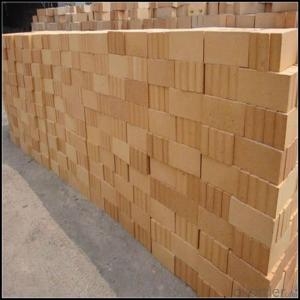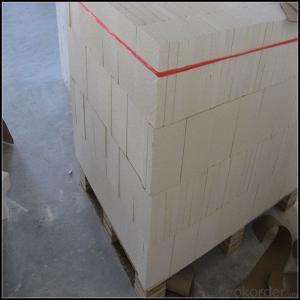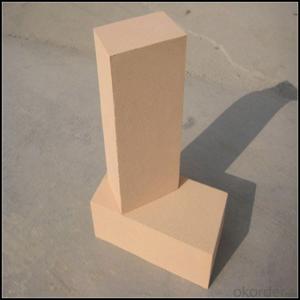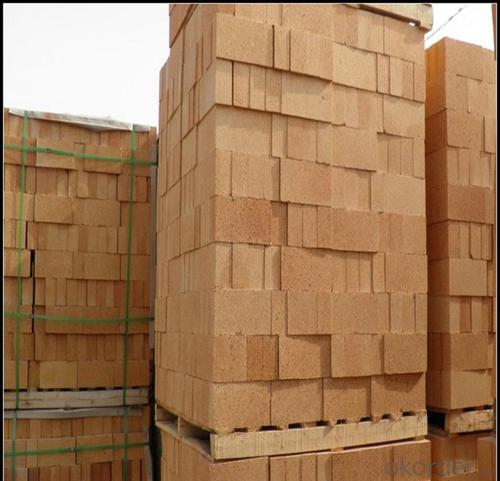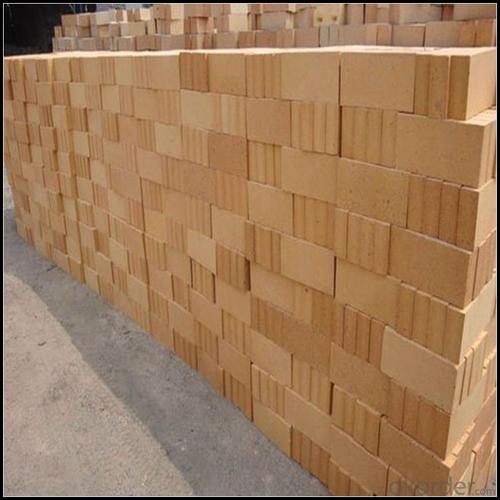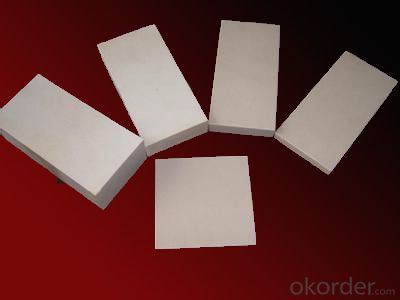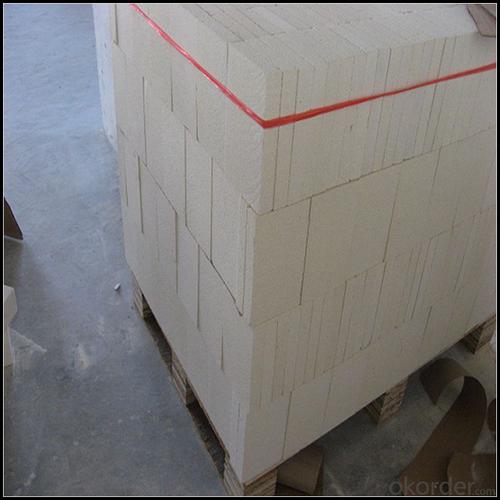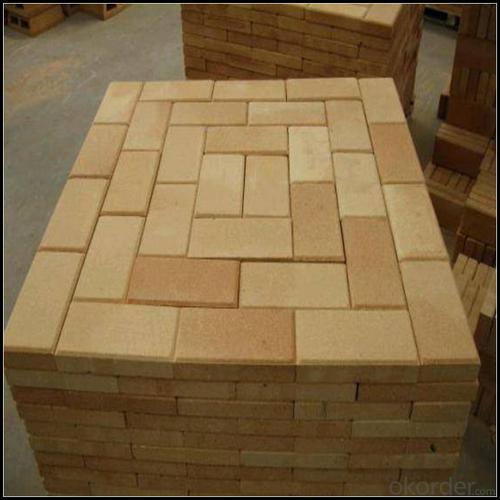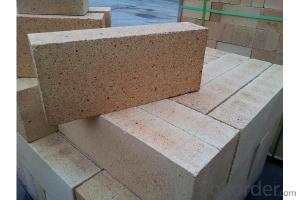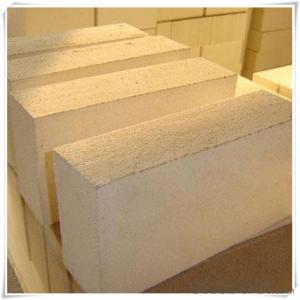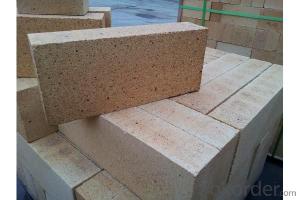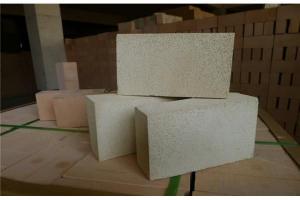Insulating Fire Brick for Glass, Steel Furnace, and Kilns
- Loading Port:
- China main port
- Payment Terms:
- TT OR LC
- Min Order Qty:
- 5 m.t
- Supply Capability:
- 800 m.t/month
OKorder Service Pledge
OKorder Financial Service
You Might Also Like
Refractory Brick
CMAX firebricks are classified under temperature between 1300℃ to 1700℃, manufactured from high purity alumina clay by mixing, press-forming, drying, sintering and machining. Bricks contain carefully-graded organic fillers which are burned out during sintering to give a uniform controllable pore structure. This technique makes product feature low thermal conductivity and excellent heat insulation
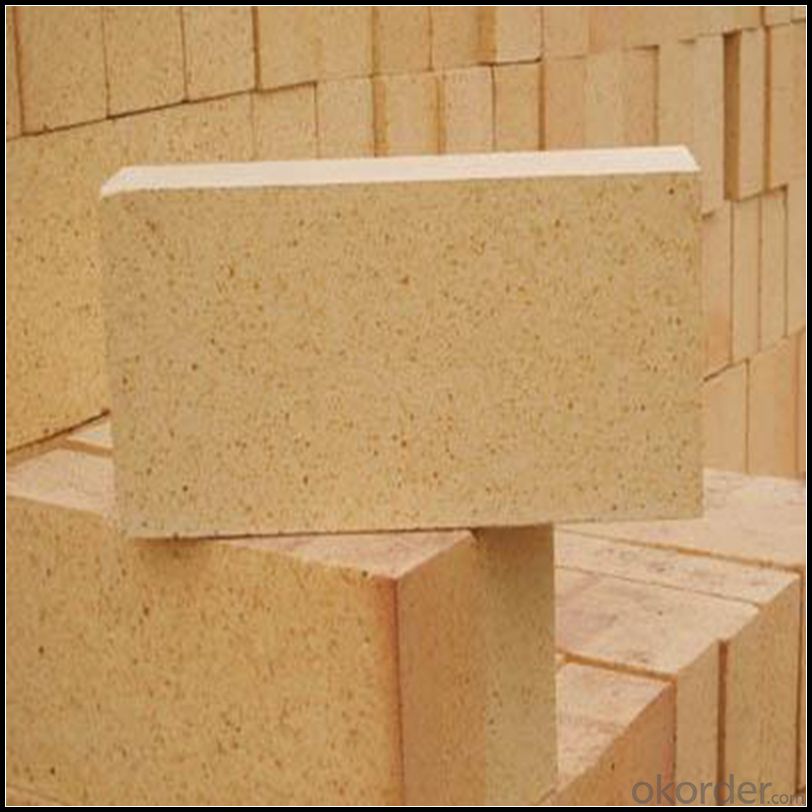
Features
a) Low thermal conductivity;
b) High refractoriness;
c) High mechanical strength;
d) Excellent thermal shock resistance;
e) Non standard sizes and shapes are available upon request.
Characteristices of high alumina brick
1. High intensity for pressure
2. Good thermal shock stability
3. Strong abrasion and corrosion resistance
4. High cold crushing strength
5. Excellent abrasion resistance at cold and hot conditions
Application
1.Building material industry,kiln,heating equipment and the inwall of high—temperature pipe line
2.Chemical industrial high temperature of reaction equipment inwall
3.Power plant ,gas turbine engine and heat insulation of unclear power
4.The fire proof of high—rise building
5.Furnace door of kiln
6.High-temperature filter material
Data Sheet
Classification Temperature (℉/℃) | 3000/1650 |
Bulk Density (g/cm3 ) | ≤1.0 |
Thermal Conductivity | |
800℃, W/m.K | ≤0.39 |
1000℃, W/m.K | ≤0.43 |
1200℃, W/m.K | ≤0.48 |
Reheating Linear Change (%) | 1550℃×12h |
≤0.9 | |
Chemical Composition (%) | |
Al2O3 | ≥75 |
Fe2O3 | ≤0.5 |
Packaging & Shipping
Packaging Details:Be packed in fumigated wooden pallets
Delivery Detail: 30 days after order
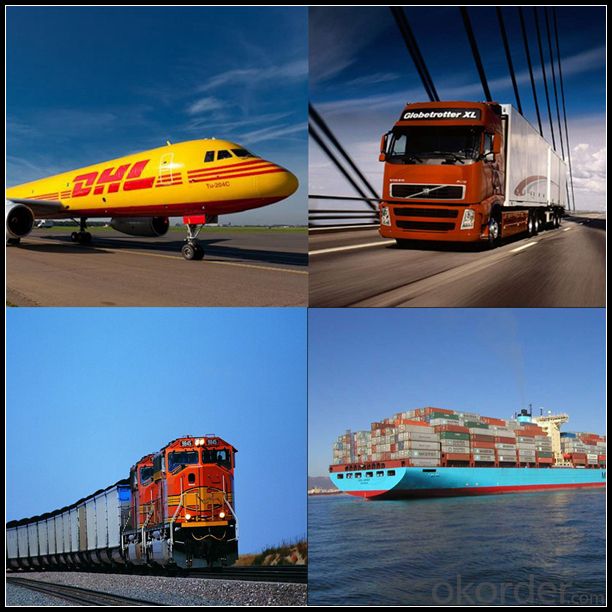
Our Services
Optimum solution and product supply of refractories for high temperature industries, such as iron steel, non-ferrous, petrochemical and building materials.
Engineering design, contract and consult for refractories, and civil architecture design.
Research, development, manufacture and sale of superhard materials.
R&D, manufacture and sale of special packing materials for export.
Inspection, supervision and arbitration of refractories.
Consultation and services in refractories information.
Training and cultivation of high-level talents in refractories profession
Sales Network

Company Information
CNBM (China National Building Material) Group is the largest comprehensive building materials group in China that in integrate scientific research, manufacturing and logistics into one entity. The largest building materials and equipment specialists in China. Upon State Council approval, today CNBM owned more than 300 subordinate manufacturing factories and servicing companies. There are 6 fully owned public listed companies and 11 partially owned with substantial shares public listed companies. In many of these fields, CNBM is playing the leading role in the building industry in the country.
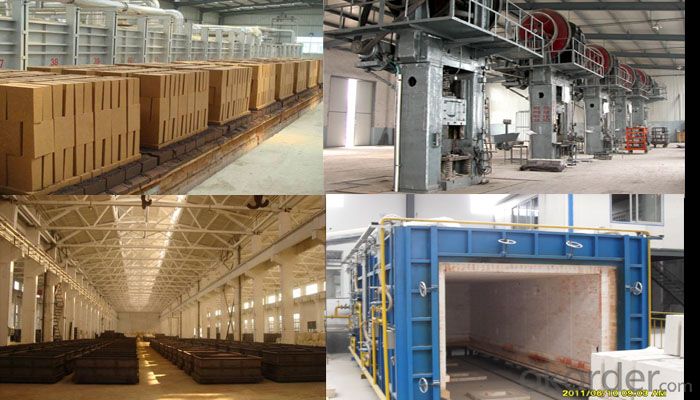
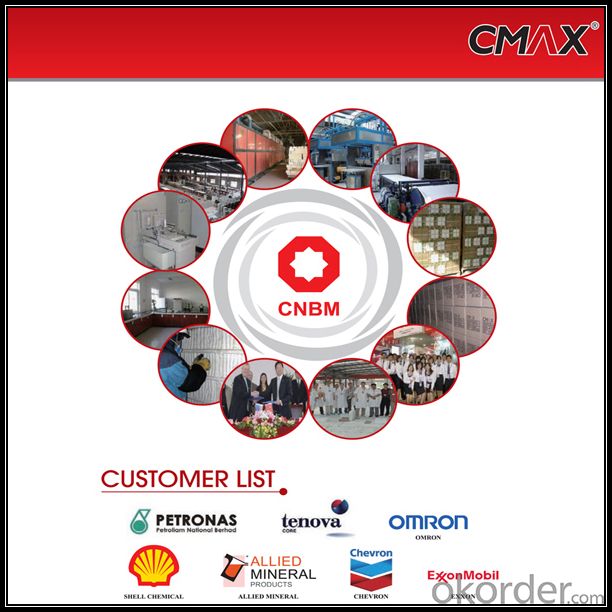
FAQ
1. Which products do you have?
We have all kinds of refractory brick, castable, mortar, cement, ceramic fiber products, etc.
Or you could browse our products to choose what you need.
2. Can you give me a brief introduction of the application of your products?
We are mainly specializing in the refractory materials in iron and steel, cement, glass, ceramics, petrochemical, electric power Industry, etc.
3. If I need your offer, what information do you need?
In order to choose suitable products, it will be appreciated to provide us the information, such us specification, technical data, order quantity, products application etc. If any question, please contact us freely.
- Q: Can insulating fire bricks be used in the construction of heat shields?
- Yes, insulating fire bricks can be used in the construction of heat shields. Insulating fire bricks are designed to withstand high temperatures and have excellent thermal insulation properties. They can effectively absorb and distribute heat, making them ideal for creating heat shields that protect against excessive heat and prevent thermal damage. Insulating fire bricks are commonly used in various industries, such as steel, glass, and ceramics, where high temperatures are involved. They are also lightweight and easy to handle, making them a practical choice for constructing heat shields that need to be portable or easily installed. Overall, insulating fire bricks are a suitable and reliable material for constructing heat shields in various applications.
- Q: What is the price of concrete self insulation bricks?
- If you really want to buy thermal insulation brick, do not simply look at the price, but also to consider the quality of the product. (a piece of brick in the market basically in 6 yuan, if there is a floating price if it is because of the size of the insulation brick or distance, but floating slightly.)
- Q: Do insulating fire bricks require any special fireproofing treatments?
- No, insulating fire bricks do not require any additional fireproofing treatments as they are already designed to withstand high temperatures and provide insulation.
- Q: Are insulating fire bricks suitable for insulation in heat treatment furnaces?
- Yes, insulating fire bricks are suitable for insulation in heat treatment furnaces. Insulating fire bricks are designed to withstand high temperatures and provide excellent thermal insulation, making them ideal for use in heat treatment furnaces where maintaining consistent and controlled temperatures is crucial. These bricks help minimize heat loss, increase energy efficiency, and ensure uniform heating throughout the furnace, resulting in improved performance and cost savings.
- Q: Can insulating fire bricks be used in chimneys and flues?
- Yes, insulating fire bricks can be used in chimneys and flues. These bricks are designed to withstand high temperatures and provide insulation, making them suitable for use in areas where heat needs to be contained or controlled, such as chimneys and flues.
- Q: Can insulating fire bricks be used in the construction of industrial dryers?
- Yes, insulating fire bricks can be used in the construction of industrial dryers. These bricks have excellent thermal insulation properties, which make them ideal for retaining heat within the dryer and reducing heat loss. Additionally, insulating fire bricks are resistant to high temperatures, making them suitable for the extreme heat generated in industrial dryers.
- Q: Are insulating fire bricks resistant to sulfur dioxide?
- Yes, insulating fire bricks are resistant to sulfur dioxide.
- Q: How does the density of an insulating fire brick affect its performance?
- The density of an insulating fire brick directly affects its performance. A higher density brick usually offers better insulation properties, as it contains more air pockets that prevent heat transfer. On the other hand, a lower density brick may have reduced insulation capabilities but can be more lightweight and easier to handle. Therefore, selecting the appropriate density for an insulating fire brick is crucial in achieving the desired level of insulation and overall performance.
- Q: Is it possible to cut insulating fire bricks to fit custom shapes?
- Cutting insulating fire bricks to fit custom shapes is indeed possible. These bricks, composed of lightweight materials like ceramic fiber, can be easily cut or shaped using a range of tools. Cutting methods typically involve a saw, knife, or even a hot wire cutter. However, it is crucial to prioritize safety precautions and wear protective gear while undertaking this task. Dust and sharp edges may be produced during the cutting process. By employing suitable tools and techniques, it becomes achievable to tailor insulating fire bricks to any desired custom shape.
- Q: Can insulating fire bricks be used for insulation in steel mills?
- Yes, insulating fire bricks can be used for insulation in steel mills. Insulating fire bricks are made from lightweight refractory materials that have excellent insulating properties and can withstand high temperatures. They are designed to minimize heat transfer and maintain the desired temperature inside the furnace or kiln. In steel mills, these bricks can be used to insulate the walls, floors, and roofs of the furnaces, ladles, and other equipment. This insulation helps to reduce heat losses, improve energy efficiency, and ensure consistent and controlled heating processes. Additionally, insulating fire bricks can provide thermal stability and protect the steel mill equipment from excessive heat, contributing to longer equipment lifespan and reduced maintenance costs.
Send your message to us
Insulating Fire Brick for Glass, Steel Furnace, and Kilns
- Loading Port:
- China main port
- Payment Terms:
- TT OR LC
- Min Order Qty:
- 5 m.t
- Supply Capability:
- 800 m.t/month
OKorder Service Pledge
OKorder Financial Service
Similar products
Hot products
Hot Searches
Related keywords

